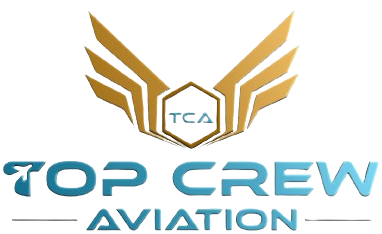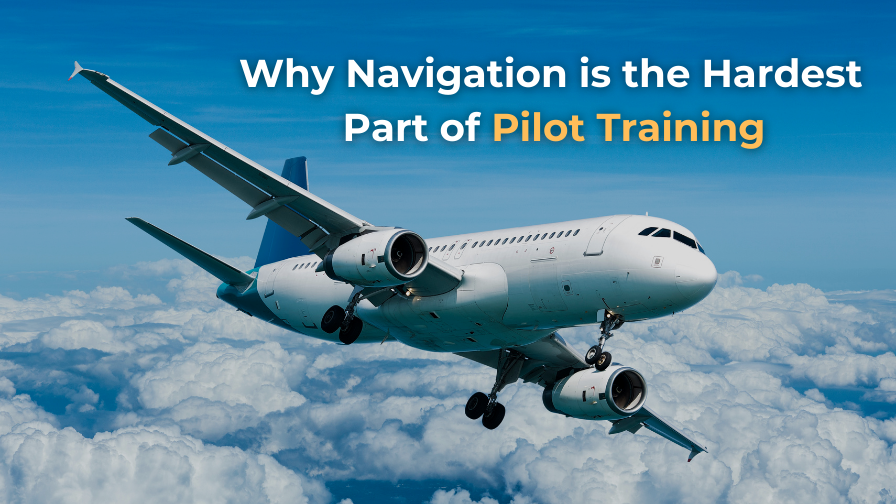Every aspiring pilot dreams of soaring above the clouds, controlling an aircraft with confidence, and enjoying the thrill of flying. However, when most people think about Pilot Training, they imagine learning to take off, land, and handle in-flight emergencies. What many don’t realize is that one of the most complex and intellectually demanding parts of the entire journey is navigation.
Navigation is not just about following a map or entering waypoints into a GPS. It is the science and art of guiding an aircraft safely and efficiently from one location to another using various tools, techniques, and calculations. In the early stages of Pilot Training, student pilots often underestimate how challenging navigation can be. But as the course progresses, they quickly realize that mastering navigation requires a blend of mathematical precision, situational awareness, theoretical knowledge, and real-time decision-making.
In this article, we’ll explore why navigation stands out as the hardest part of Pilot Training, the skills required to master it, the mistakes students often make, and tips to succeed.
What is Navigation in Pilot Training?
Navigation in aviation refers to the process of planning, recording, and controlling the movement of an aircraft from one point to another. Unlike driving a car, where roads guide your path, flying requires pilots to rely on invisible routes in the sky. These routes are determined by a mix of ground-based aids, satellites, charts, and regulations.
During Pilot Training, navigation is broken down into two main categories:
- Visual Navigation (VFR – Visual Flight Rules): Pilots navigate by looking outside, referencing landmarks like rivers, highways, towns, and terrain features.
- Instrument Navigation (IFR – Instrument Flight Rules): Pilots rely on instruments, radio signals, and satellite-based systems to navigate, especially when visibility is poor.
Both require deep understanding, and both present unique challenges to student pilots.
Why Navigation is Considered the Hardest Part of Pilot Training
a) Complexity of Theoretical Knowledge
Navigation isn’t just about following a straight line from Point A to Point B. Pilots must understand:
- Aeronautical charts and how to read them.
- Magnetic variation and deviation.
- Time-speed-distance calculations.
- Wind correction angles.
- Fuel planning.
The volume of theoretical knowledge makes navigation a daunting subject during Pilot Training.
b) Mental Math and Real-Time Calculations
A large portion of navigation requires quick mental calculations. For example:
- If the wind changes direction, how does that affect your heading?
- If you’re off course by 5 nautical miles, how do you correct it?
- How do you calculate the Estimated Time of Arrival (ETA) after speed adjustments?
These calculations must be done while flying the aircraft, communicating with ATC, and maintaining situational awareness — a skill that overwhelms many students in the beginning.
c) Weather’s Unpredictable Influence
Weather is one of the most challenging factors in navigation. Wind, storms, cloud cover, and turbulence can quickly turn a well-planned route into a stressful in-flight puzzle. During Pilot Training, students learn how to interpret meteorological reports, apply wind correction angles, and plan alternates — all of which require both skill and judgment.
d) Reliance on Precision and Attention to Detail
Even a small error in calculation or chart reading can put an aircraft miles off course. Unlike handling the controls, where errors are immediately felt, navigation mistakes often accumulate unnoticed until it’s too late. This precision requirement makes it one of the hardest parts of Pilot Training.
e) Transition from Visual to Instrument Navigation
Student pilots often start with visual navigation, which feels intuitive. However, the transition to instrument navigation (IFR) can feel like learning a new language. Reading instruments, interpreting signals, and navigating without looking outside challenges even the brightest students.
Read Also – What It Feels Like to Fly Solo for the First Time
Key Skills Required to Master Navigation
To overcome the challenges of navigation during Pilot Training, a student must build the following skills:
- Mathematical Proficiency: Strong foundation in basic arithmetic, geometry, and trigonometry.
- Situational Awareness: Constantly knowing the aircraft’s position relative to landmarks, airspace, and weather.
- Decision-Making: Quickly adapting plans in response to unexpected changes.
- Time Management: Calculating ETAs, fuel requirements, and scheduling alternates.
- Communication Skills: Coordinating with Air Traffic Control while managing navigation tasks.
Common Mistakes Students Make in Navigation
- Overreliance on GPS: Many student pilots depend too much on GPS systems instead of understanding the basics of dead reckoning and visual navigation.
- Poor Pre-Flight Planning: Skipping detailed route planning leads to confusion mid-air.
- Neglecting Wind Factors: Not applying wind correction angles often results in drifting off course.
- Inadequate Chart Reading: Misinterpreting charts or failing to check for restricted airspace.
- Ignoring Alternate Routes: Not preparing for diversions when weather or emergencies arise.
These mistakes highlight why navigation is such a critical — and difficult — component of Pilot Training.
How Navigation Differs from Other Aspects of Pilot Training
- Flying Skills vs. Thinking Skills: Flying involves hand-eye coordination, but navigation requires complex thinking and analysis.
- Instant Feedback vs. Delayed Results: With flying, you feel the aircraft’s response instantly. Navigation errors may take time to reveal themselves.
- Confidence vs. Caution: Students may feel confident flying straight and level, but navigation forces them to constantly question and verify.
This mental contrast makes navigation particularly demanding during Pilot Training.
Real-Life Challenges Pilots Face with Navigation
Even professional pilots face navigation challenges daily. Examples include:
- Flying over featureless terrain (like oceans or deserts) with minimal visual references.
- Dealing with strong crosswinds that push aircraft off course.
- Navigating in unfamiliar international airspace with complex procedures.
This is why flight schools emphasize navigation so heavily during Pilot Training — it prepares pilots for the real-world challenges they’ll face.
Tips to Succeed in Navigation During Pilot Training
- Master the Basics First: Understand charts, compass errors, and wind corrections before relying on advanced tools.
- Practice Mental Math: Quick calculations build confidence and reduce stress in the cockpit.
- Simulate Scenarios: Use flight simulators to practice unexpected diversions and instrument failures.
- Stay Organized: Keep a clean navigation log, pre-plan fuel stops, and always have a backup.
- Learn from Mistakes: Every miscalculation is a learning opportunity — use it to refine your skills.
Why Navigation Training Builds Better Pilots
Although it is challenging, navigation training molds students into more disciplined and confident aviators. Here’s how:
- It enhances critical thinking.
- It improves confidence under pressure.
- It strengthens multi-tasking abilities.
- It prepares pilots for real-world flying, where no two flights are the same.
This is why instructors often say, “If you can master navigation, you can master flying.”
The Future of Navigation in Pilot Training
With the rise of modern technology, navigation is evolving:
- GPS and satellite navigation have made flying more accurate.
- Glass cockpits provide real-time situational data.
- AI-powered navigation tools may simplify calculations in the future.
However, flight schools still insist on teaching traditional navigation methods because technology can fail. A pilot must always be capable of navigating manually — a key reason why navigation remains a cornerstone of Pilot Training.
Conclusion
Navigation is undoubtedly one of the hardest — yet most rewarding — parts of Pilot Training. It challenges the mind more than the hands, forcing student pilots to think critically, plan thoroughly, and act decisively. While the steep learning curve intimidates many at first, those who dedicate themselves to mastering navigation emerge as safer, smarter, and more capable pilots.
Ultimately, navigation is not just about getting from one place to another. It’s about learning to think like a pilot, anticipate challenges, and make sound decisions under pressure. That is why navigation, despite being the hardest part of Pilot Training, is also the one that shapes aspiring aviators into true professionals of the skies.


